Its dramatic and spectacular boss fights just about keep Black Myth: Wukong afloat, but behind all its glitz and glamour is a frustratingly hollow and rudderless action game.
Black Myth: Wukong is nothing if not ambitious. As many of its early trailers and tech demos implied, this was a game punching above its weight. It wasn’t just a lavish retelling of the epic Chinese novel Journey to the West, a work that games have rarely engaged with outside of Asia (Ninja Theory’s Enslaved: Odyssey to the West notwithstanding), but it also seemed to be demonstrating a level of technical mastery and visual pizzazz we hadn’t quite seen before. It immediately put developer Game Science on the map, even if it wasn’t always for the most savoury of reasons.
But now, after spending upwards of 40 hours retracing the steps of its titular simian hero as the silent but deadly Destined One, Black Myth emerges as a game that frustrates more than it delights. Its plentiful supply of grand, sweeping boss battles set the heart alight at regular intervals, its mythological menagerie bristling with the same kind of malicious energy and intent as their FromSoft equivalents. They are the tentpoles that hold this game aloft, their sharp claws, vicious fangs and powerful hoofs often tearing up the screen in exquisite and sumptuous detail. Indeed, they’re the kind of bosses that will probably go down as some of the most dramatic of this generation, with its glistening dragons that rage across icy lakes and rippling pools, muscular tigers that sup in temples of blood, and giant bears, wolves, rats and spiders that command the elements to devastating effect.
But outside of those pulse-racing encounters, Black Myth is an altogether more mind-numbing experience, its thrilling highs undone by baggy world design, an uneven difficulty curve and disjointed storytelling. Ostensibly, this is a quest about reviving the legendary Sun Wukong, who scattered himself to the wind in the form of six relics after being defeated in battle centuries earlier. As the Destined One, you’ll travel through forests, sand, ice, ash and more to bring them back to your mountain home, winding your way through its alternately narrow and wide linear environments until you reach the big bad in possession of it.
It’s all very straightforward in hindsight. But this is also a game where you’ll finish one chapter fighting a flaming bear on a top of a hill one minute, then immediately start the next lying half-dead in a desert with a chest full of arrows, all with zero context on how you got there, what happened in between, or why you’re even here in the first place. It’s jarring, to say the least, and immediately slams the brakes on any kind of catharsis or elation you might be feeling after finally sweating (and often cursing) your way through the preceding boss battle. This hands-off approach also extends to not telling you what you’re meant to be doing next, causing any sense of narrative momentum to also come to another juddering halt. These rug-pulls only become more egregious as the game goes on, too, not least because later chapters also subject you to the interminably bad hang of a boorish companion (who I’ll avoid naming) whose constant spew of belittling and snide remarks about you will only make you want to take his ‘legendary’ rake and run it across his eyeballs.
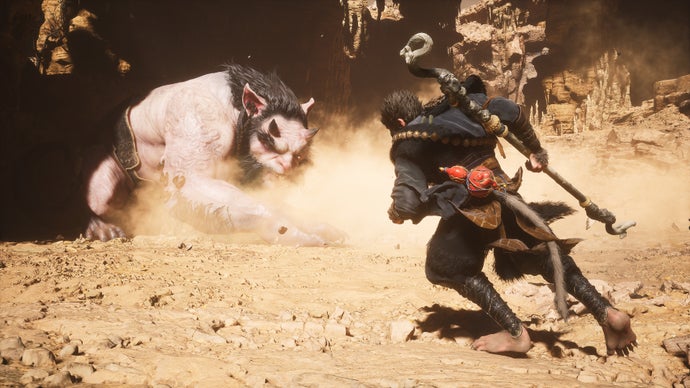
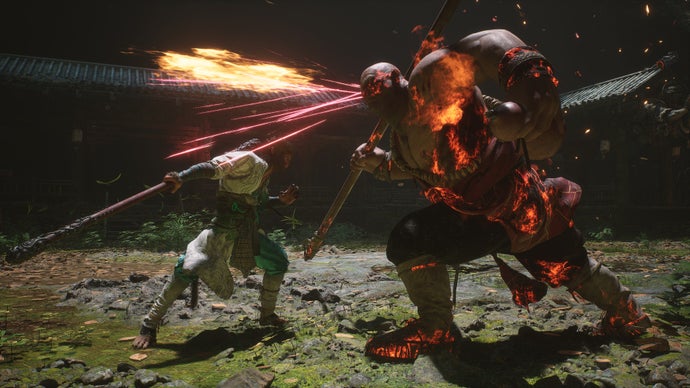
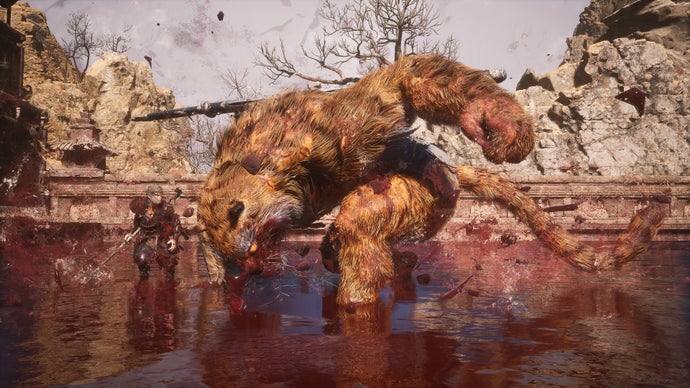
Alas, these contrivances are made worse by Black Myth’s muddled environments. Foregoing a map and compass is one thing, but Wukong’s biggest sin is letting its pursuit of realism run away with itself, resulting in beautiful, but frequently frustrating sprawls that make basic navigation a surprising chore. Their lack of tonal variety not only makes them difficult to parse at a glance, but when so much is kept at eye-level, its lack of vertical landmarks also just makes it difficult to hold its interconnected passageways together in your own head. One dusty ravine looks much like another when you traipse down dead-end after dead-end, and while some will no doubt revel in the feeling of ‘being lost in the world’ and stumbling across some hidden sub-boss or tucked away treasure (of which there are many), any sense of intrepid exploration is too often thwarted by its clumsy barrage of invisible walls, raising the fences around its world’s poorly defined edges even further. When a creature of the forest can’t even clamber over the smallest of rocks or fallen tree trunks, you can’t help but feel like the ‘Destined One’ is an increasingly inaccurate moniker.
Maybe it’s harsh to hold these fundamentally linear spaces to the same standards as larger open worlds. But whichever way you slice it, there’s no denying that Black Myth lacks that compositional eye for design that would help frame its luscious environments in a friendlier and more curious light. You rarely move forward in Black Myth because you feel motivated by the story, or because you got sidetracked by something interesting in your immediate eyeline. Rather, it’s really all you can do to find some sense of purpose in this world, and it raises the question: how can a game based on a work called ‘Journey to the West’ feel so utterly directionless?
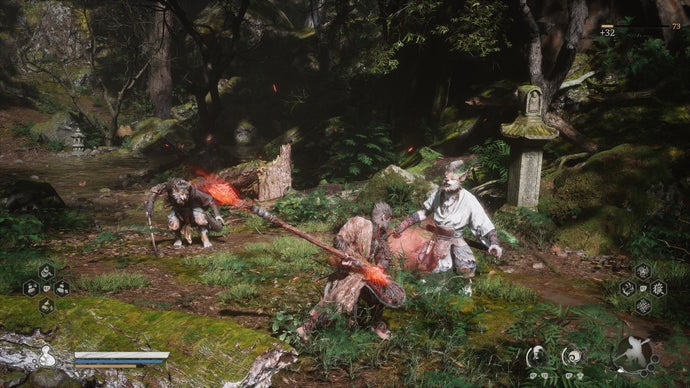
It would help if the action between its spectacular boss fights at least kept your thumbs busy in the interim, but sadly the ‘Lesser’ Yaoguai demons roaming these lands very much live up to their name. They’re not nearly as exciting to fight as Black Myth’s Yaoguai ‘Kings’ and ‘Chief’ bosses, and many can be easily dispatched a quick button mash. It’s a shame, as their visual design is once again top notch, instilling a sense of Soulsian foreboding when you encounter a new one for the first time. But once you’ve got to grips with Black Myth’s simple combat system, they quickly pose little threat to you, becoming little more than punching bags. There aren’t that many of them either, and fewer still that respawn after resting at a shrine, as even some seemingly regular enemies are categorised as unique foes who don’t return once defeated, leaving its worlds feeling increasingly empty the longer you spend in them.
It also makes grinding up for a particularly hard boss quite laborious, though in fairness, Black Myth’s difficulty is reasonably well pitched for the most part. As long as you keep seeking out its sub-bosses and mulching everything that stands in your way, you shouldn’t really need to grind, per se, though that’s not to say it’s completely free from some truly despairing difficulty spikes. I lost an entire day to one early, end of chapter boss fight, for example, while others make you endure the spongiest health bars you’ve seen this side of Elden Ring. In these moments, you feel less like a proto monkey god, and more like a mouse wielding a toothpick, nipping at the heels of these gargantuan foes to little effect. The only relief is that you don’t lose all your ‘Will’ currency and unspent skill points on death. All that stays with you no matter how many times you get ground into the dust, making the sting of death just a teeny bit more palatable.
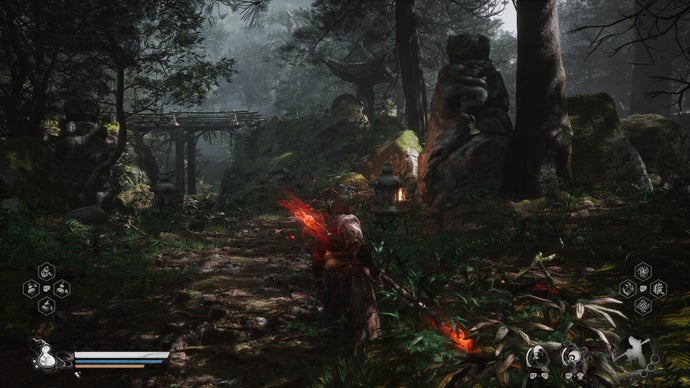
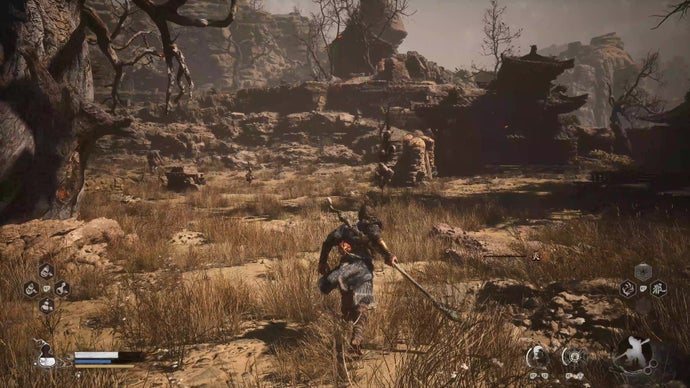
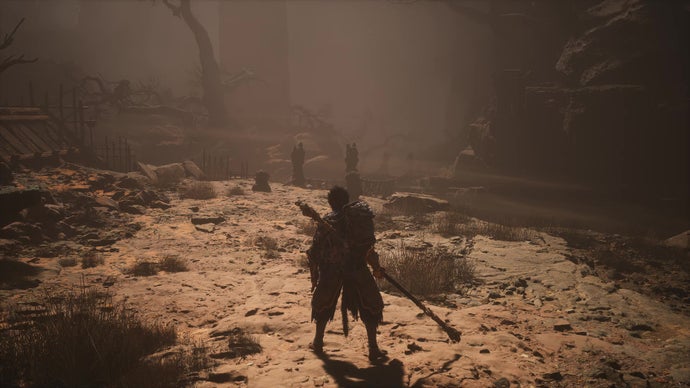
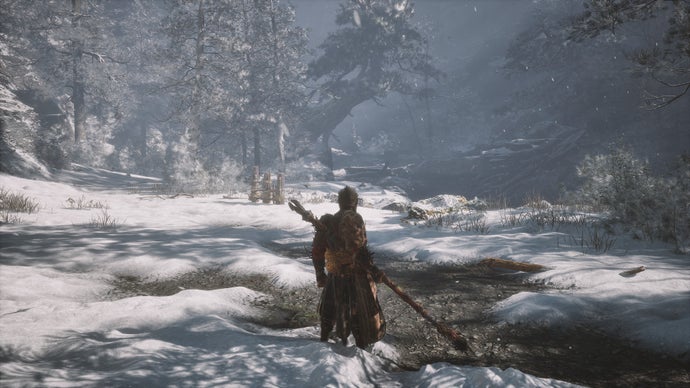
That said, there are also plenty of occasions where that David and Goliath dynamic really works in Black Myth’s favour, amping up the drama as you tussle with these enormous, fantastical creatures, and deftly weave through showers of lightning, icy squalls and large, open jaws. Even its more down to earth, monkey-sized foes still put on a good show, too, filling the screen with all manner of visual effects to test your nerve and timing. Occasionally, it can all get a bit messy, obscuring the action and your place within it (and often to your detriment). But the camera does a decent job of keeping pace with you most of the time, and it frames the action in a way that feels tense, desperate and exciting.
It’s just a shame how quickly those feelings dissipate when you do run into one of these spikes, and it reveals just how much wasted potential there is in its underlying combat system. At its most basic level, the Destined One has far more in common with the likes of Kratos and Bayonetta than FromSoft’s Tarnished or Chosen Undead here, relying more on the rapid display of brute force button mashing and pitch-perfect dodging to bring down his enemies than the tentative prodding over the parapet of a shield. But despite the multiple and many-pronged skill trees at your disposal, which can all be respecced for free whenever you get to a shrine, a lot of its upgrades fall into the same trap Cyberpunk 2077 did before its 2.0 update, mostly offering meagre stat boosts rather than fundamentally changing your available skill set.
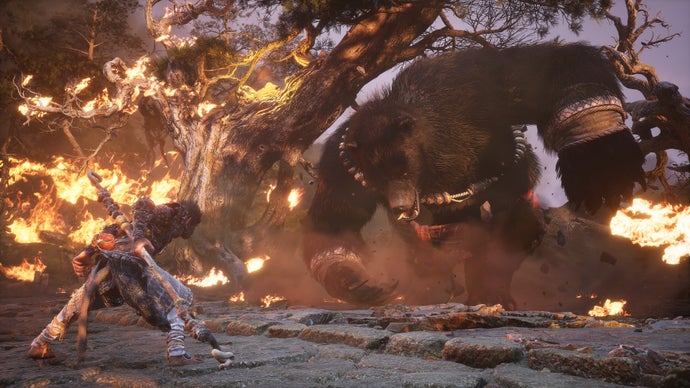
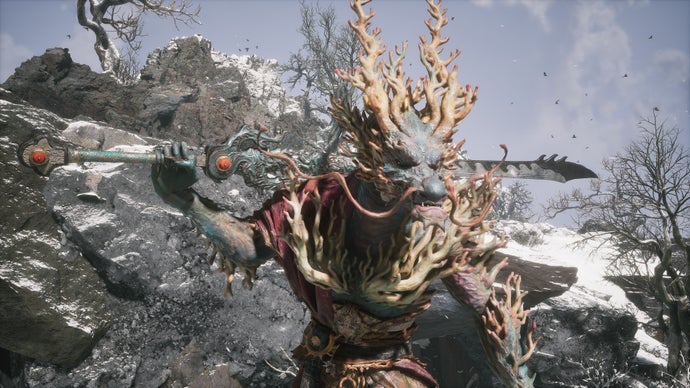
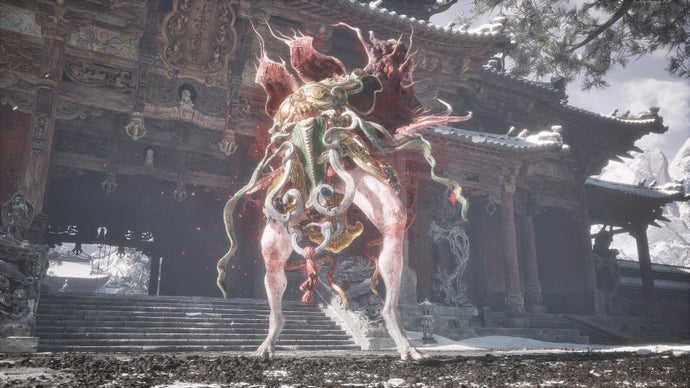
Even its alternate staff stances feel under-utilised, as all they change is how you execute your heavy attack, which itself requires the accumulation of focus points (and having enough stamina) before you can even unleash it. Bosses aren’t any more susceptible to one stance versus another, either, so you’re left with little choice but keep mashing X in the meantime. Each stance certainly looks cool in the moment, with the Destined One bouncing around his foes and delivering some almighty, skull-crashing finishers when they land, but these visual flourishes are repeatedly undermined by an awkwardness in the controls. The trigger buttons in particular do too much heavy lifting, with spells, spirit summons and twirling your staff to deflect incoming projectiles all mapped to various different trigger-button combos that will have you screaming when the thing you want to happen doesn’t and you get clipped round the ear to the tune of half your health bar in the process.
Mistakes are costly in Black Myth, and casting a spell at the wrong time can be surprisingly devastating, as they not only have painfully long cooldowns, but their use is also curtailed by your limited mana pool, which can rarely be replenished outside of resting at a shrine. It’s a shame, as the spells are easily Black Myth: Wukong at its most fun. The highlight without doubt is the Destined One’s signature Immobilise spell, which freezes enemies in place for a limited time so you can really start to pile on the pain. Likewise, his Transformation spells, though few in number, allow him to fight in the guise of other demons for a time, each with their own unique light, heavy and special attacks to play with and, crucially, their own separate health bar – which can be a lifeline in certain boss fights.
It all speaks to Black Myth’s clear desire to dazzle and entertain, and there are times when it really delivers on that power fantasy, making you forget the long hours spent grinding and gnashing your teeth as you try and figure out where to go, or whether this boss you’re bashing your head against is even relevant to the main story. But Wukong’s glitz and glamour can only paste over its cracks for so long, as behind all that razmataz is a hollowness it never quite shakes. Its unpleasant (and badly lip-synced) supporting cast also do little to make it feel more inviting as you go along, and by the end you’ll wonder whether this journey was even worth making in the first place. Yes, there are some spectacular boss fights to have along the way, but those after something more would be better off looking in a different direction.
A copy of Black Myth: Wukong was provided for review by Game Science.
